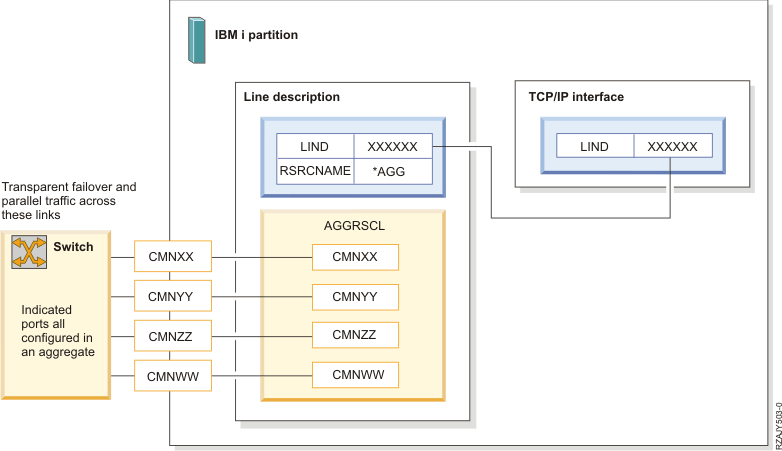Ethernet Link Aggregation
Link Aggregation binds several full-duplex Ethernet links running at the same speed together into one logical link with a single Media Access Control (MAC) address.
- IEEE 802.3ad or 802.1ax
- Cisco supports this idea under the name EtherChannel
- Other vendors use the names "teaming" or "trunking"

Link Aggregation provides two main advantages: improved reliability through automatic failover and aggregated throughput.
If any of the links lose their connection, the IBM® i support transmits outgoing frames on other active links. The link partner does the same for incoming frames. The automatic failover is provided on a per-frame basis, usually without affecting any running workloads. For example, if one link goes down on a four-port aggregate, the remaining three links handle the traffic that would have traveled on the down link. If any links are operational, the aggregate continues to function.
In addition, each operational aggregated link can run at the configured line speed, and outgoing traffic is spread according to a configured preference. Incoming traffic is spread across the links according to configuration at the link partner. Many workloads, especially workloads with multiple parallel TCP or UDP conversations, can take advantage of this configuration to scale their throughput over available ports.
Performance
Incoming and outgoing traffic through an aggregated link requires some more processing than traffic through an individual link. In addition, depending on what combination of resources are in the aggregate, some advanced performance features of the aggregated resources might be disabled. For example, if some aggregated resources support TCP large send offload over IPv6 and others do not, the aggregate does not support TCP large send offload over IPv6.